Abstract
Surveillance of apparently healthy ducks, chickens, and geese at a poultry dressing plant in Hong Kong yielded 51 haemagglutinating viruses 25 of which were influenza A viruses. Of these, 24 were subtyped into 13 combinations based on haemagglutinin and neuraminidase surface antigens. Of the 13 different influenza A viruses isolated, 7 possessed combinations of haemagglutinin and neuraminidase subunits that have not been reported previously—i.e., Hav2N1, Hav2Nav5, Hav4N2, Hav7N2, Hav7Nav1, Hav7Nav3, and Hav7Nav6. Four of the isolates were non-avid: they were not neutralized by antisera to any of the reference subtypes of influenza A viruses, yet antisera to each isolate inhibited both that virus and a known reference strain. The large number of combinations of haemagglutinin and neuraminidase and the isolation of two different influenza A viruses from one duck suggests that recombination may be occurring in nature.
Full text
PDF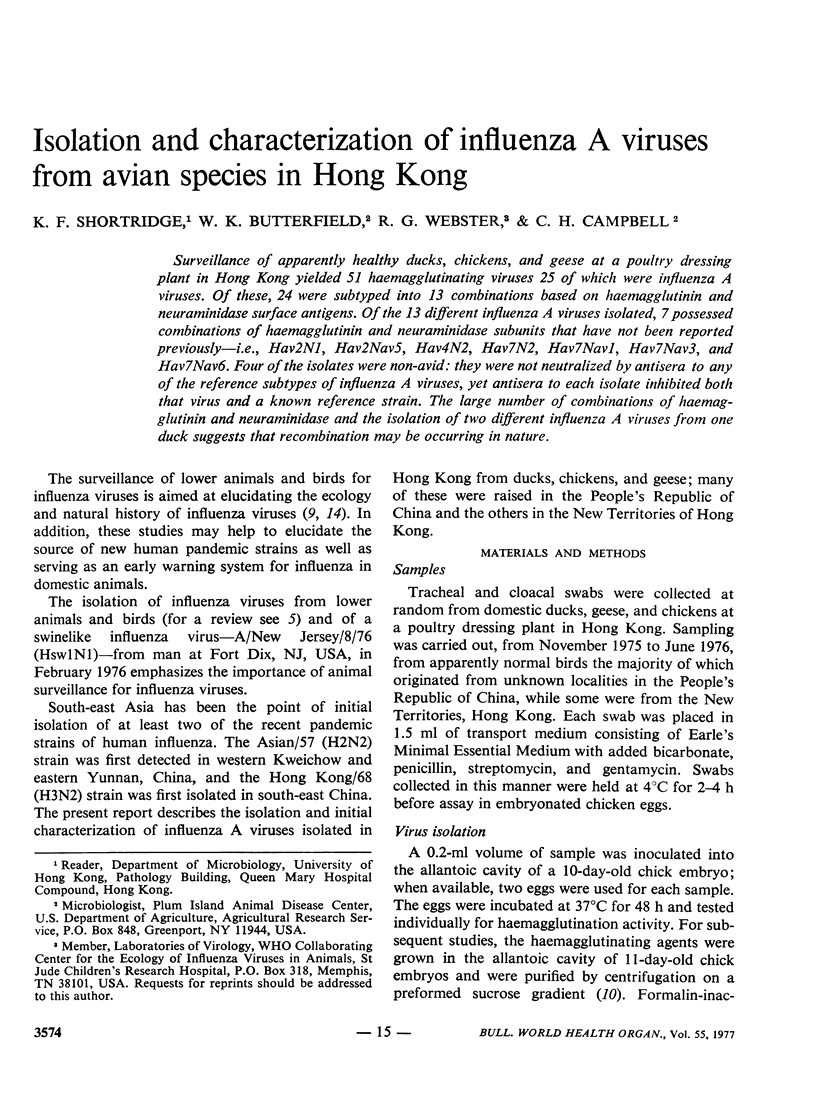
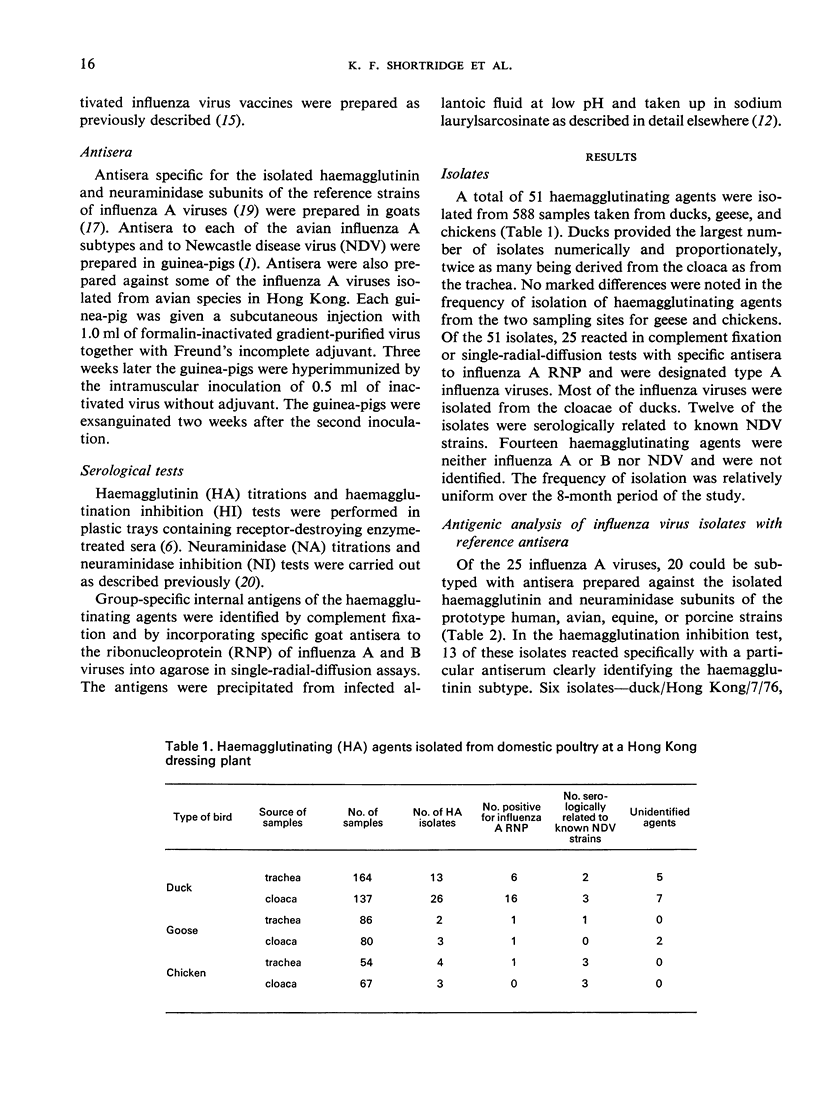
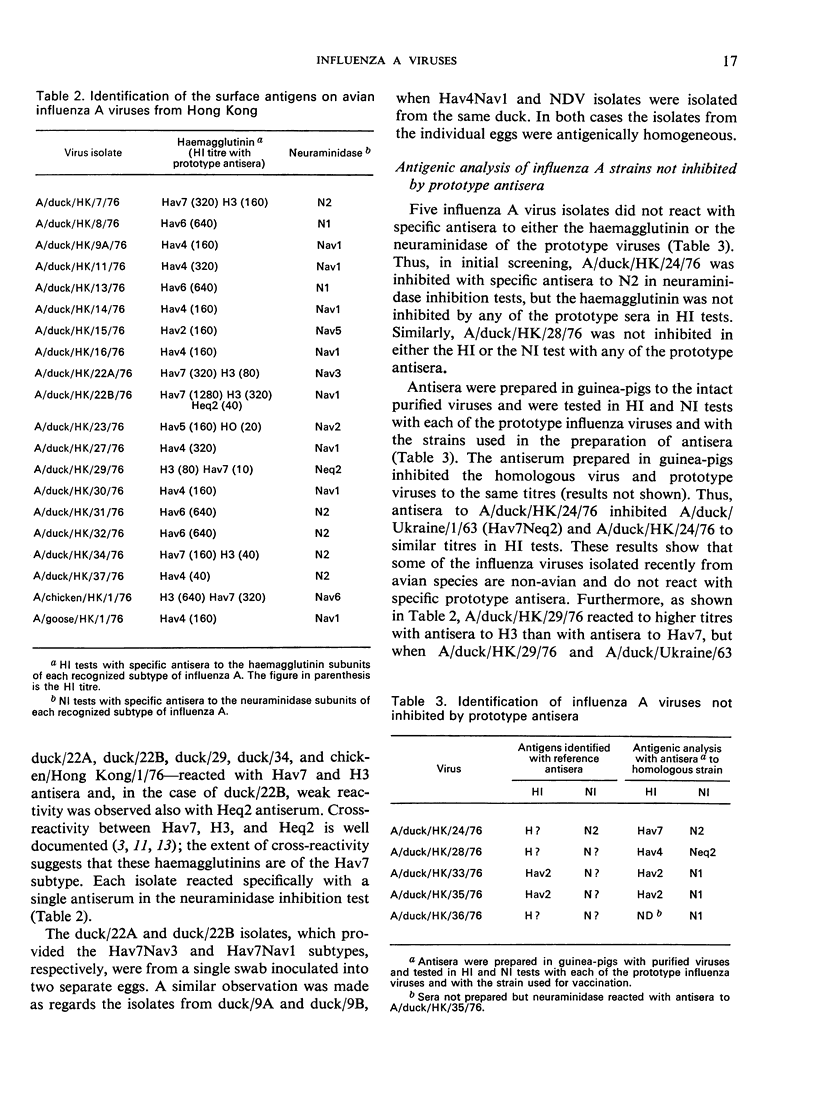
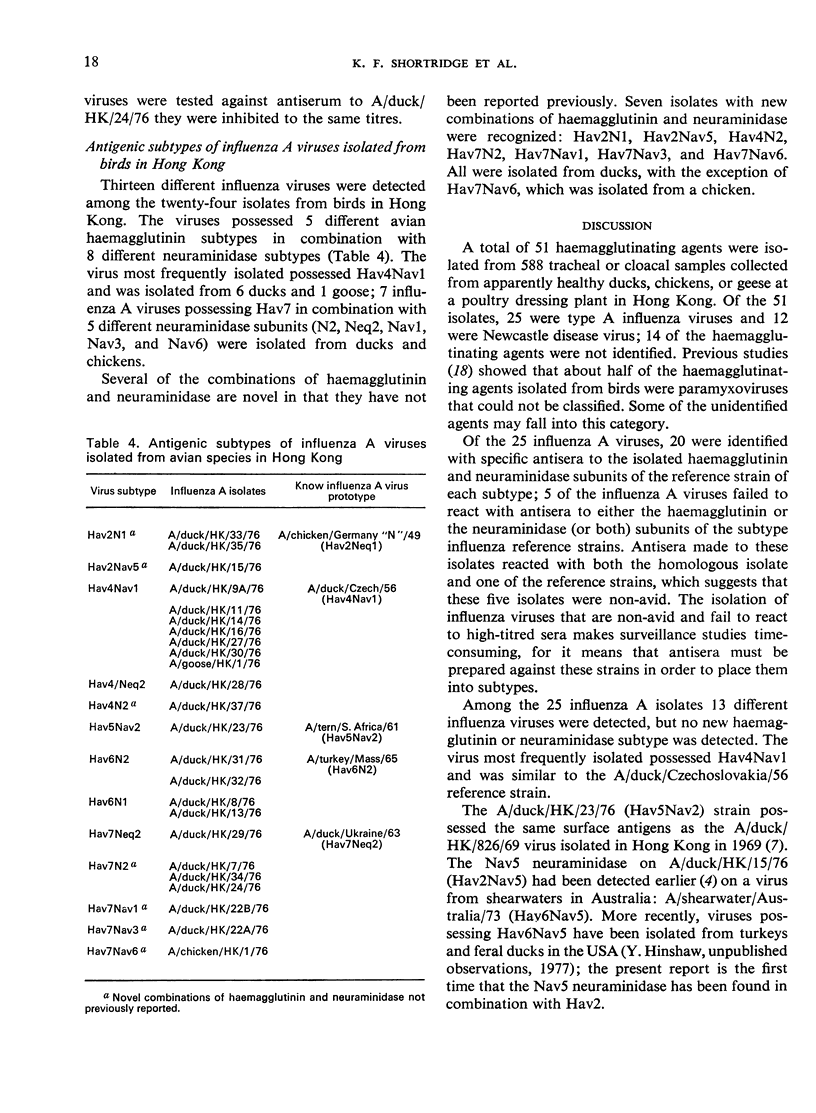
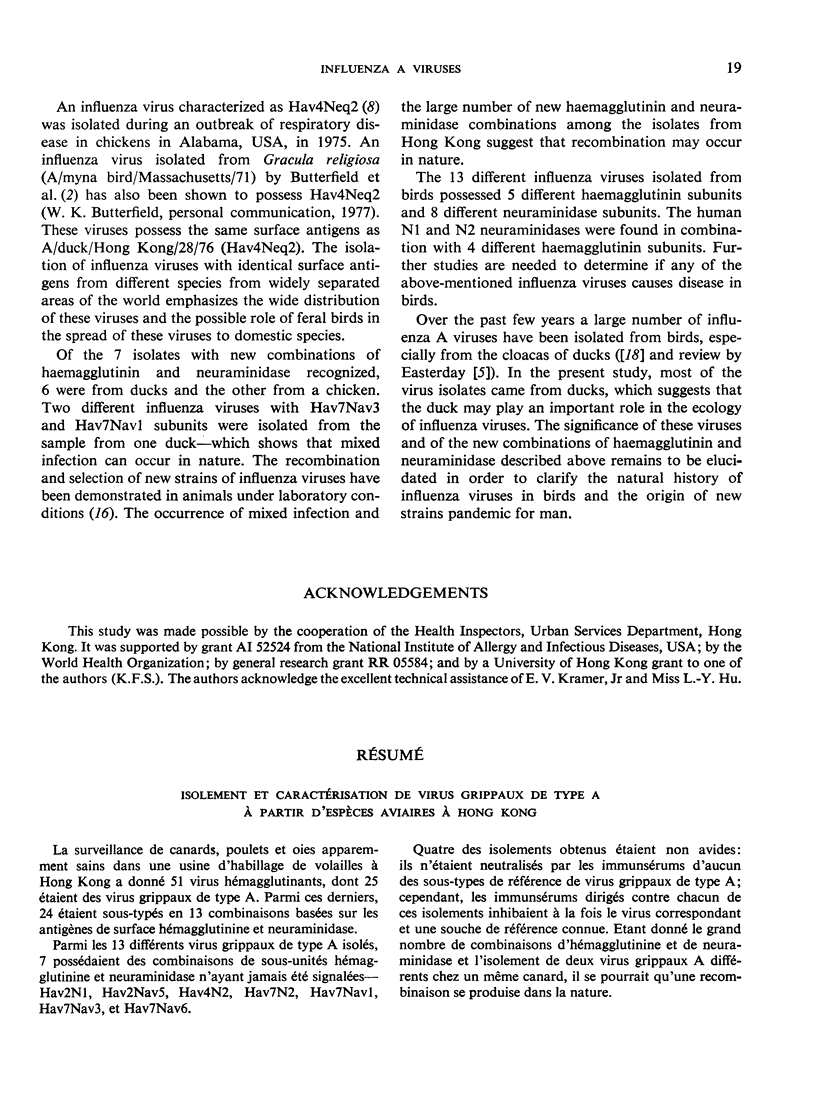

Selected References
These references are in PubMed. This may not be the complete list of references from this article.
- Butterfield W. K., Graves J. H. Detection and differentiation of strains of Newcastle Disease Virus by complement fixation. Avian Dis. 1975 Apr-Jun;19(2):267–276. [PubMed] [Google Scholar]
- Downie J. C., Laver W. G. Isolation of a type A influenza virus from an Australian pelagic bird. Virology. 1973 Feb;51(2):259–269. doi: 10.1016/0042-6822(73)90426-1. [DOI] [PubMed] [Google Scholar]
- Fazekas de St Groth, Webster R. G. Disquisitions of Original Antigenic Sin. I. Evidence in man. J Exp Med. 1966 Sep 1;124(3):331–345. doi: 10.1084/jem.124.3.331. [DOI] [PMC free article] [PubMed] [Google Scholar]
- Higgins D. A., Schild G. C. Characterization of the haemagglutinin and neuraminidase antigens of some recent avian type A influenzavirus isolates from Hong Kong. Bull World Health Organ. 1972;47(4):531–534. [PMC free article] [PubMed] [Google Scholar]
- Kaplan M., Beveridge W. I. WHO coordinated research on the role of animals in influenza epidemiology: introduction. Bull World Health Organ. 1972;47(4):439–448. [PMC free article] [PubMed] [Google Scholar]
- Laver W. G., Webster R. G. Studies on the origin of pandemic influenza. 3. Evidence implicating duck and equine influenza viruses as possible progenitors of the Hong Kong strain of human influenza. Virology. 1973 Feb;51(2):383–391. doi: 10.1016/0042-6822(73)90437-6. [DOI] [PubMed] [Google Scholar]
- Tumova B., Easterday B. C. Relationship of envelope antigens of animal influenza viruses to human A2 influenza strains isolated in the years 1957-68. Bull World Health Organ. 1969;41(3):429–435. [PMC free article] [PubMed] [Google Scholar]
- Webster R. G., Campbell C. H. Studies on the origin of pandemic influenza. IV. Selection and transmission of "new" influenza viruses in vivo. Virology. 1974 Dec;62(2):404–413. doi: 10.1016/0042-6822(74)90402-4. [DOI] [PubMed] [Google Scholar]
- Webster R. G., Campbell C. H. The in vivo production of "new" influenza A viruses. II. In vivo isolation of "new" viruses. Virology. 1972 May;48(2):528–536. doi: 10.1016/0042-6822(72)90063-3. [DOI] [PubMed] [Google Scholar]


